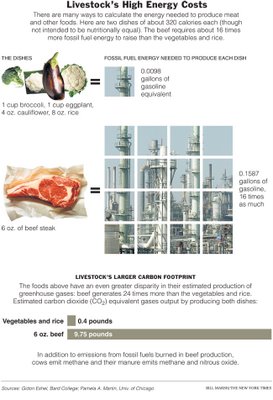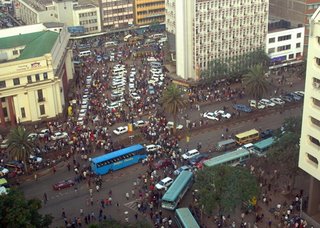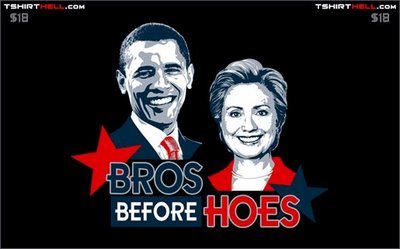This graphic from the New York Times illustrates the different environmental costs of meat and vegetable production (click on image to enlarge):
politics
As if the world needed another battleground, peaceful Kenya slipped into a civil war as post-election demonstrations turned to riots, and riots to rampages. Kenya’s December 27th elections could have ended as a model for party transition, but instead it became the worst possible scenario.
EU observers agreed the vote processes were flawed and results were denounced as rigged by the main opposition party. Protesters were shot by police leading to rioting and repeated demonstrations. Hundreds of thousands of Kenyans fled their homes and hundreds lie dead as the conflict became an ethnically charged civil war.
Two years ago I had the good fortune of spending four days in Kenya. To my amazement Nairobi’ downtown felt like a Midwestern city: orderly, friendly, uncongested, clean, and mostly absent of beggars. But Nairobi has over three million people, a half million of which live in Africa’s largest slum.
Poverty in many rural villages was evident, but the Kenyan people, especially the women, work very hard. In the first photo is a typical rural scene where the women do back breaking work in the fields.
During our brief stay the papers headlined several major political events: President Kibaki, who is still the uncompromising president, fired his entire cabinet. The next day he suspended all of parliament. On the third day, major public demonstrations took place in the streets by the opposition party calling for new presidential elections.
I watched these demonstrations on the streets of Nairobi and felt the tension and anger. The demonstrations, however, ended without incident. But apparently it has not been uncommon for people to die in Nairobi demonstrations.
I took the 2nd photograph of the demonstrations in the central city. Notice that it could pass for football game day in a small US city.
What can sociology add to help us understand Kenya’s tragic, unfolding story? Here are three perspectives that may help:
Social Class Perspective: The images we are given by the American network media are suggestive of warring savages. In fact, the riots and ethnic strife are phenomena of the poverty class, not the wealthy and middle classes, although the leaders of both warring factions are wealthy politicians. Sharp inequality and festering poverty lay beneath the surface of this formerly peaceful country.
Historical Conflict Perspective: The British spent decades trying to keep the Luo and Kikuyu divided to preserve colonial order. (Now these are the two major warring ethnic groups.) During the decolonization process the British drew electoral boundaries to cut the representation of groups they thought might cause trouble. This only fanned the flames of tension among these groups. In the past few years tribal factions fighting over cattle rights in the Rift Valley have left over 100,000 refugees. These conditions helped ignite recent spontaneous rioting, looting and killing.
Race/Ethnicity Perspective: Both sides of the conflict are accusing the other of genocide, and both may be right. It will take months if not years to assess the horrendous damage. Ethnic hatreds run deep and prolonged, but the first cause of this war was political. It was the common practice of rigging elections followed by a refusal of the President to negotiate a coalition government.
What other sociological perspectives help to explain what is happening in Kenya and what might happen in the future?
Despite all kinds of “truces” and “promises” in the media lately about “leaving race and gender out” of the democratic primaries, gender and race are obviously a part of this presidential election cycle.
But, here’s a newsflash: even when the candidates are all white men, gender and race are STILL a part of the decisions made about who should be president.
Think back to 2004 for a moment– remember all those political cartoons criticizing Kerry for being too “French” (as opposed to American Cowboy) and generally feminizing his image (feminine = bad for politics) in political cartoons.
I’m fascinated by the anti-Hillary Clinton facebook groups. There are dozens of these groups, but four groups have the most members.
- Stop Running for President and Make Me a Sandwich– 30,000+ members
- Anti Hillary Clinton for President ’08– 65,000+ members
- Stop Hillary Clinton: One Million Strong AGAINST Hillary– 700,000+ members
- Life’s a Bitch, Why Vote for One?– 14,000+ members
So this morning I spent some time looking at the images that dominate these groups. The images these groups use to criticize Clinton as a presidential candidate make it pretty clear that sexism is alive and well (beyond the protesters asking Clinton to iron their shirts)– and that gendered ways to talk about politics are as cogent as ever! Here’s a smattering for you– there are so many I couldn’t possibly post them all!
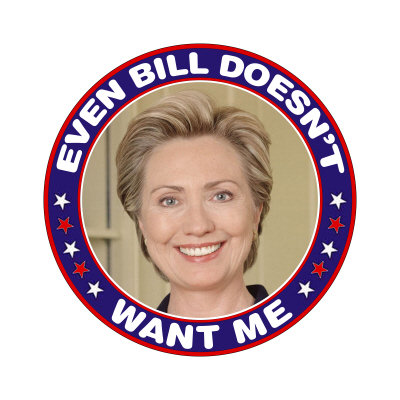
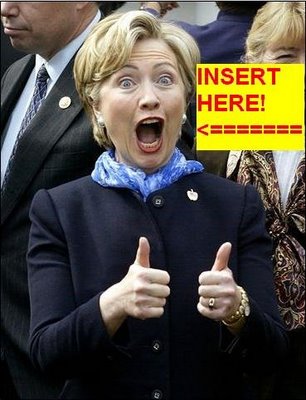
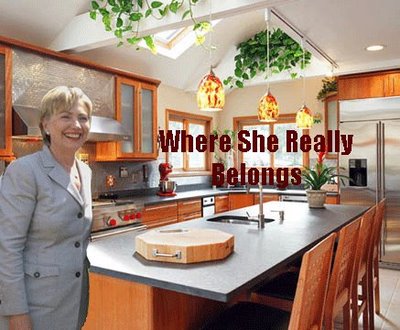
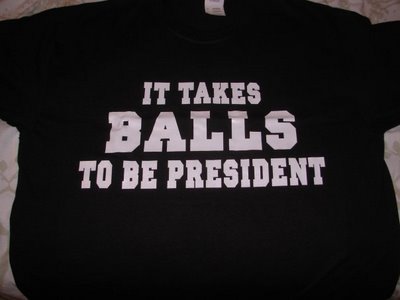
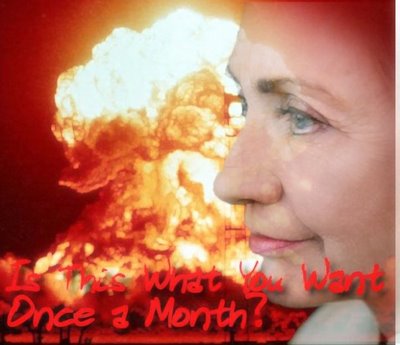
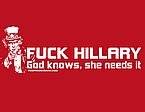
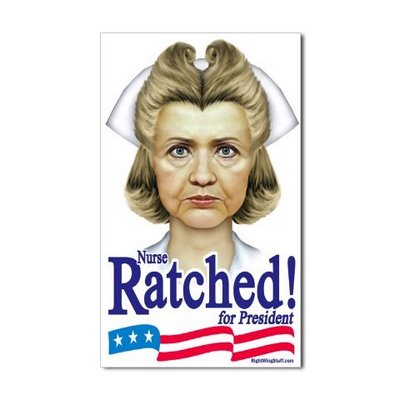
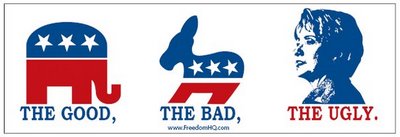
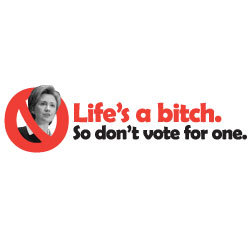
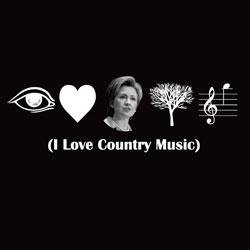
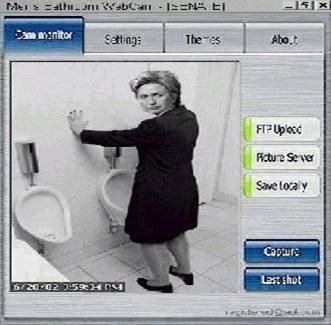
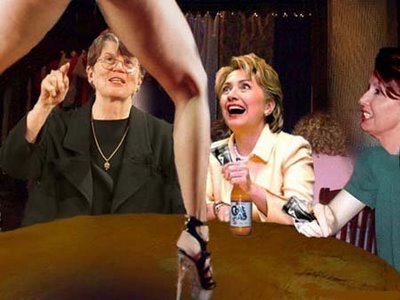
And the intersection of race and gender…
Here is a link to the Oklahoma Marriage Initiative, a publicly-sponsored marriage-promotion program. The idea behind it is that increasing marriage, particularly among poor women, would decrease poverty and, therefore, welfare rolls.
Here is a link to the parenting section. Among other things, couples will learn “the benefits of marriage” and “strengthening the father-child bond.” Nothing is said about the mother-child bond–presumably it’s just fine. Note also that in the artwork for the page is very gendered–the woman is holding the baby, the male figure is standing over or protecting her. If you go to the photos section (pictures of actual participants), there are pictures of men holding their babies.
It might be useful to read the article “The Marriage Cure,” by Katherine Boo, in the August 18 & 25, 2003, issue of The New Yorker as well–Boo follows several poor black women as they go through the program and try to figure out how to find marriagable men (and it is made clear to them that they need to look for a man, any man).
I’m going to use this in my Intro to Sociology course as a way to discuss the idea that poor women wouldn’t be poor if only they would get married–to anyone.
Hecklers shout at Clinton to “iron my shirt!” at a campaign speech in New Hampshire: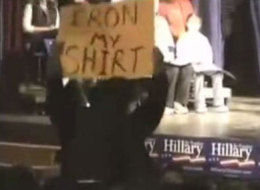 See the video:[youtube]http://www.youtube.com/watch?v=FjS8_WWhjao[/youtube] Via the Huffington Post.
See the video:[youtube]http://www.youtube.com/watch?v=FjS8_WWhjao[/youtube] Via the Huffington Post.
This is a really interesting comparative analysis of the Kerry and Bush logos from the most recent presidential election. Notice how gender and class operate in the design and analysis.
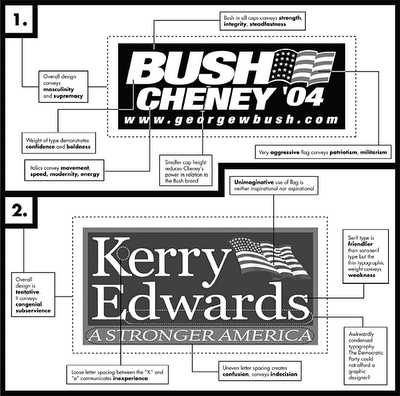 Richard also pointed me to this slide show, also from the New York Times, commenting on logos for the candidates in the current primaries.
Richard also pointed me to this slide show, also from the New York Times, commenting on logos for the candidates in the current primaries.
This campaign ad from 1988 is part of the larger politicization of the black underclass. “Willie Horton” and the “welfare queen” both emerged as symbols during this period with which to demonize poor blacks for political clout. Ultimately, using the name Willie Horton became a powerful tool to criticize politicians for being weak on crime and not protecting the innocent white population from the guilty black population.
[youtube]https://www.youtube.com/watch?v=Io9KMSSEZ0Y[/youtube]
Ultimately, increasing toughness of the criminal justice system led to a situation, today, where about 1/2 of all black men are in the prison system. See an interesting entry on Willie Horton on wikipedia here.
Click here for a humorous music video about prescription drugs and the pharmaceutical industry.
EU observers agreed the vote processes were flawed and results were denounced as rigged by the main opposition party. Protesters were shot by police leading to rioting and repeated demonstrations. Hundreds of thousands of Kenyans fled their homes and hundreds lie dead as the conflict became an ethnically charged civil war.
Two years ago I had the good fortune of spending four days in Kenya. To my amazement Nairobi’ downtown felt like a Midwestern city: orderly, friendly, uncongested, clean, and mostly absent of beggars. But Nairobi has over three million people, a half million of which live in Africa’s largest slum.
Poverty in many rural villages was evident, but the Kenyan people, especially the women, work very hard. In the first photo is a typical rural scene where the women do back breaking work in the fields.
During our brief stay the papers headlined several major political events: President Kibaki, who is still the uncompromising president, fired his entire cabinet. The next day he suspended all of parliament. On the third day, major public demonstrations took place in the streets by the opposition party calling for new presidential elections.
I watched these demonstrations on the streets of Nairobi and felt the tension and anger. The demonstrations, however, ended without incident. But apparently it has not been uncommon for people to die in Nairobi demonstrations.
I took the 2nd photograph of the demonstrations in the central city. Notice that it could pass for football game day in a small US city.
What can sociology add to help us understand Kenya’s tragic, unfolding story? Here are three perspectives that may help:
Social Class Perspective: The images we are given by the American network media are suggestive of warring savages. In fact, the riots and ethnic strife are phenomena of the poverty class, not the wealthy and middle classes, although the leaders of both warring factions are wealthy politicians. Sharp inequality and festering poverty lay beneath the surface of this formerly peaceful country.
Historical Conflict Perspective: The British spent decades trying to keep the Luo and Kikuyu divided to preserve colonial order. (Now these are the two major warring ethnic groups.) During the decolonization process the British drew electoral boundaries to cut the representation of groups they thought might cause trouble. This only fanned the flames of tension among these groups. In the past few years tribal factions fighting over cattle rights in the Rift Valley have left over 100,000 refugees. These conditions helped ignite recent spontaneous rioting, looting and killing.
Race/Ethnicity Perspective: Both sides of the conflict are accusing the other of genocide, and both may be right. It will take months if not years to assess the horrendous damage. Ethnic hatreds run deep and prolonged, but the first cause of this war was political. It was the common practice of rigging elections followed by a refusal of the President to negotiate a coalition government.
Despite all kinds of “truces” and “promises” in the media lately about “leaving race and gender out” of the democratic primaries, gender and race are obviously a part of this presidential election cycle.
But, here’s a newsflash: even when the candidates are all white men, gender and race are STILL a part of the decisions made about who should be president.
Think back to 2004 for a moment– remember all those political cartoons criticizing Kerry for being too “French” (as opposed to American Cowboy) and generally feminizing his image (feminine = bad for politics) in political cartoons.
I’m fascinated by the anti-Hillary Clinton facebook groups. There are dozens of these groups, but four groups have the most members.
- Stop Running for President and Make Me a Sandwich– 30,000+ members
- Anti Hillary Clinton for President ’08– 65,000+ members
- Stop Hillary Clinton: One Million Strong AGAINST Hillary– 700,000+ members
- Life’s a Bitch, Why Vote for One?– 14,000+ members
So this morning I spent some time looking at the images that dominate these groups. The images these groups use to criticize Clinton as a presidential candidate make it pretty clear that sexism is alive and well (beyond the protesters asking Clinton to iron their shirts)– and that gendered ways to talk about politics are as cogent as ever! Here’s a smattering for you– there are so many I couldn’t possibly post them all!












And the intersection of race and gender…
Here is a link to the Oklahoma Marriage Initiative, a publicly-sponsored marriage-promotion program. The idea behind it is that increasing marriage, particularly among poor women, would decrease poverty and, therefore, welfare rolls.
Here is a link to the parenting section. Among other things, couples will learn “the benefits of marriage” and “strengthening the father-child bond.” Nothing is said about the mother-child bond–presumably it’s just fine. Note also that in the artwork for the page is very gendered–the woman is holding the baby, the male figure is standing over or protecting her. If you go to the photos section (pictures of actual participants), there are pictures of men holding their babies.
It might be useful to read the article “The Marriage Cure,” by Katherine Boo, in the August 18 & 25, 2003, issue of The New Yorker as well–Boo follows several poor black women as they go through the program and try to figure out how to find marriagable men (and it is made clear to them that they need to look for a man, any man).
I’m going to use this in my Intro to Sociology course as a way to discuss the idea that poor women wouldn’t be poor if only they would get married–to anyone.
Hecklers shout at Clinton to “iron my shirt!” at a campaign speech in New Hampshire: See the video:[youtube]http://www.youtube.com/watch?v=FjS8_WWhjao[/youtube] Via the Huffington Post.
See the video:[youtube]http://www.youtube.com/watch?v=FjS8_WWhjao[/youtube] Via the Huffington Post.
This is a really interesting comparative analysis of the Kerry and Bush logos from the most recent presidential election. Notice how gender and class operate in the design and analysis.
 Richard also pointed me to this slide show, also from the New York Times, commenting on logos for the candidates in the current primaries.
Richard also pointed me to this slide show, also from the New York Times, commenting on logos for the candidates in the current primaries.
This campaign ad from 1988 is part of the larger politicization of the black underclass. “Willie Horton” and the “welfare queen” both emerged as symbols during this period with which to demonize poor blacks for political clout. Ultimately, using the name Willie Horton became a powerful tool to criticize politicians for being weak on crime and not protecting the innocent white population from the guilty black population.
[youtube]https://www.youtube.com/watch?v=Io9KMSSEZ0Y[/youtube]
Ultimately, increasing toughness of the criminal justice system led to a situation, today, where about 1/2 of all black men are in the prison system. See an interesting entry on Willie Horton on wikipedia here.
Click here for a humorous music video about prescription drugs and the pharmaceutical industry.

